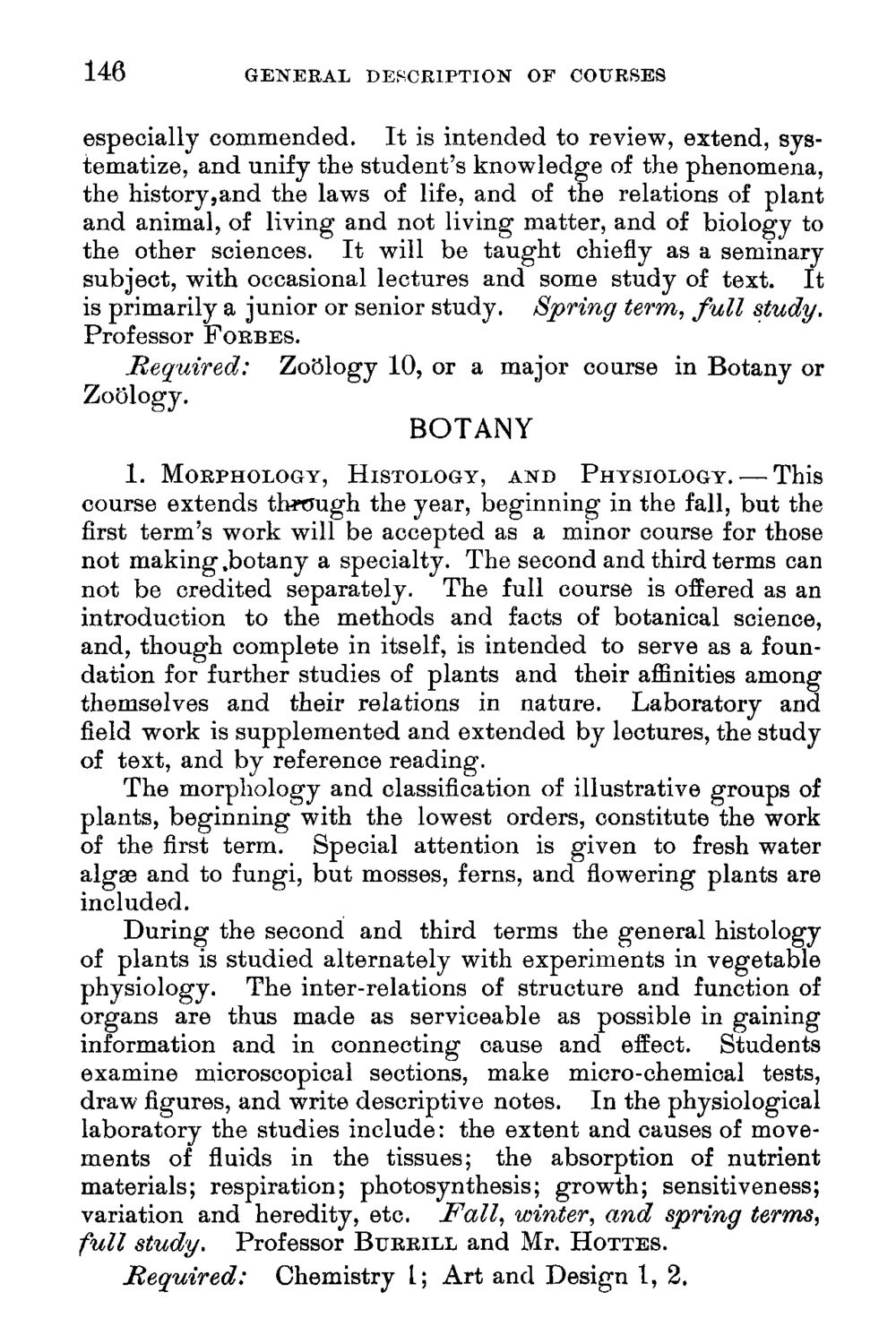| |
| |
Caption: Course Catalog - 1895-1896
This is a reduced-resolution page image for fast online browsing.

EXTRACTED TEXT FROM PAGE:
146 GENERAL DESCRIPTION OF COURSES especially commended. It is intended to review, extend, systematize, and unify the student's knowledge of the phenomena, the history,and the laws of life, and of the relations of plant and animal, of living and not living matter, and of biology to the other sciences. It will be taught chiefly as a seminary subject, with occasional lectures and some study of text. It is primarily a junior or senior study. Spring term, full study. Professor FORBES. Required: Zoology. Zoology 10, or a major course in Botany or BOTANY 1. MORPHOLOGY, HISTOLOGY, AND PHYSIOLOGY. — This course extends thraugh the year, beginning in the fall, but the first term's work will be accepted as a minor course for those not making .botany a specialty. The second and third terms can not be credited separately. The full course is offered as an introduction to the methods and facts of botanical science, and, though complete in itself, is intended to serve as a foundation for further studies of plants and their affinities among themselves and their relations in nature. Laboratory and field work is supplemented and extended by lectures, the study of text, and by reference reading. The morphology and classification of illustrative groups of plants, beginning with the lowest orders, constitute the work of the first term. Special attention is given to fresh water algse and to fungi, but mosses, ferns, and flowering plants are included. During the second and third terms the general histology of plants is studied alternately with experiments in vegetable physiology. The inter-relations of structure and function of organs are thus made as serviceable as possible in gaining information and in connecting cause and effect. Students examine microscopical sections, make micro-chemical tests, draw figures, and write descriptive notes. In the physiological laboratory the studies include: the extent and causes of movements of fluids in the tissues; the absorption of nutrient materials; respiration; photosynthesis; growth; sensitiveness; variation and heredity, etc. Fall, winter, and spring terms, full study. Professor BURRILL and Mr. HOTTES. Required: Chemistry L; Art and Design 1, 2.
| |